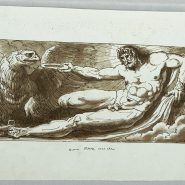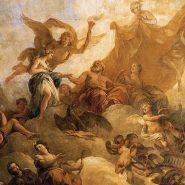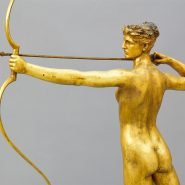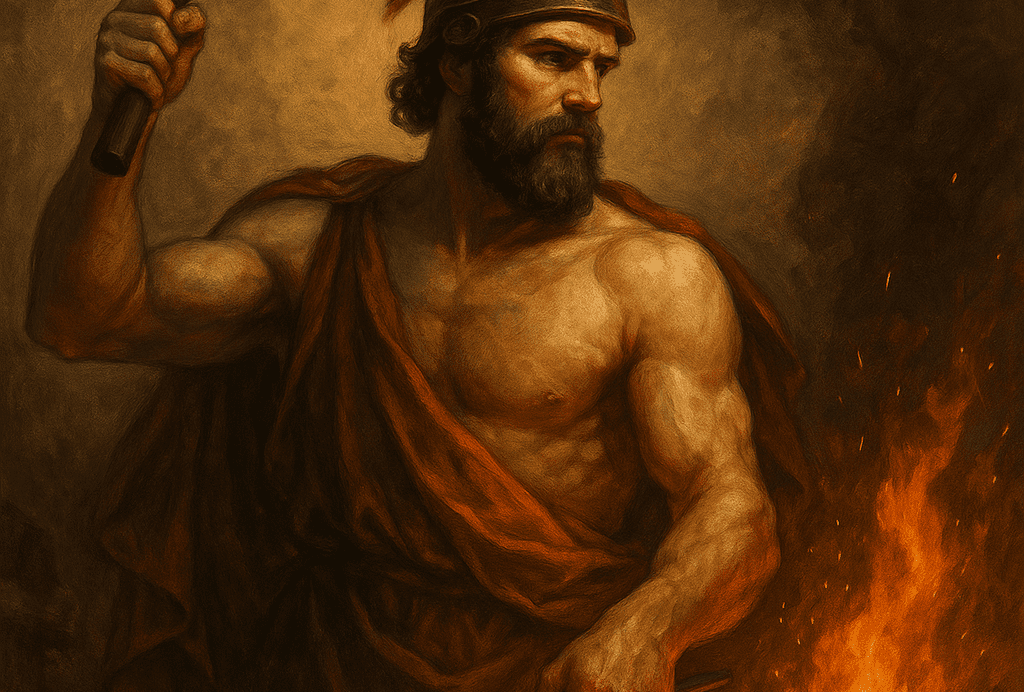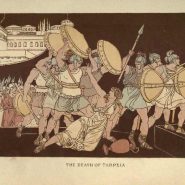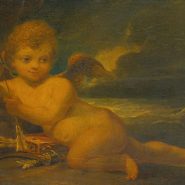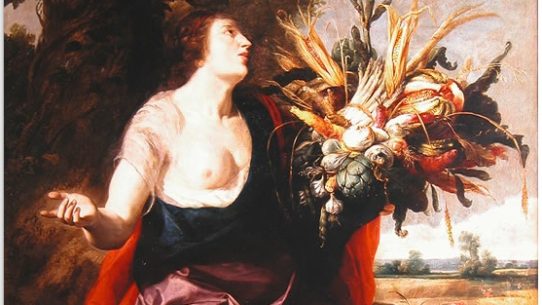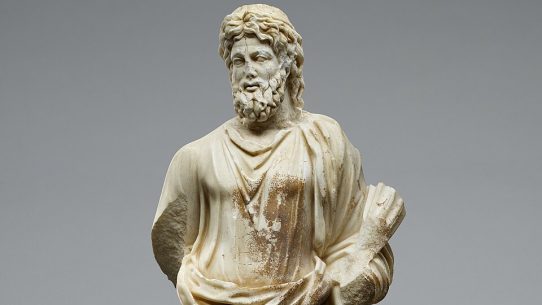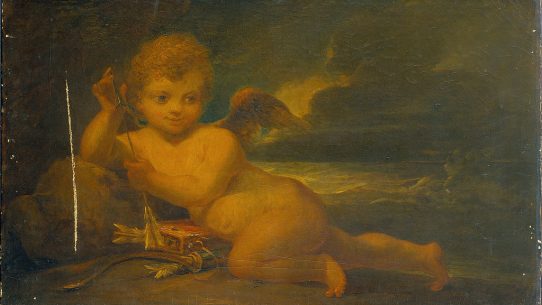Vulcan, the Roman god of fire, metalworking, and craftsmanship, embodied both the creative and destructive powers of flame.
To the Romans, he was the divine blacksmith — the master of forge and furnace, whose hands shaped the weapons of gods and men alike. His fire could bring warmth and civilization, yet also devastation and ruin.
Revered by artisans and feared by those who witnessed nature’s fury, Vulcan represented the dual nature of technology: its potential for creation and its power for destruction. In him, Rome saw the transforming strength of human skill guided by divine force.
Name and Origin
The name “Vulcan” likely derives from the ancient Italic word Volcanus, linked to volcanic fire and the blazing heart of the earth. His cult dates back to the earliest days of Rome, long before Greek influence, when fire was worshipped as both protector and destroyer.
In later times, the Romans identified Vulcan with the Greek god Hephaestus, adopting his myths while preserving Vulcan’s uniquely Roman character. He was less the humble craftsman of Greek lore and more the elemental force of fire itself — a god whose forge burned beneath volcanoes and whose temper mirrored their eruptions.
Attributes and Symbols
Vulcan was depicted as a muscular, bearded man, often bent over his anvil, his face marked by toil and wisdom. His tools — the hammer, tongs, and anvil — symbolized skill, labor, and transformation. Fire was both his servant and his essence.
Unlike the polished beauty of other gods, Vulcan’s appearance reflected the dignity of work and endurance. His sacred animals included the donkey, representing perseverance, and the crane, symbolizing vigilance. Flames, coals, and volcanic imagery surrounded his temples and festivals, reminding worshippers of the thin line between fire’s blessing and curse.
Family and Relationships
In Roman myth, Vulcan was the son of Jupiter and Juno, though some traditions say he was born of Juno alone in jealousy over Jupiter’s creation of Minerva.
Cast from Olympus because of his deformity, Vulcan landed in the sea, where he was rescued and raised by sea nymphs. His skill as a smith soon made him indispensable to the gods. He forged Jupiter’s thunderbolts, Mars’s armor, and the weapons of countless heroes.
Married to Venus, the goddess of love and beauty, he represented the union of passion and creation — love’s spark made literal fire. Though Venus’s affections often wandered, Vulcan’s devotion to his craft and his art remained unwavering.
Myths and Stories
Vulcan’s myths reveal his role as both outcast and creator.
One famous story tells how he caught Venus and Mars in an affair. Crafting an invisible net of bronze, he trapped them together before the other gods, exposing their deceit. Though humiliated, Vulcan’s cunning earned admiration — his art could bind even the divine.
Another tale recounts how he forged the thunderbolts that Jupiter used to rule the heavens. In some versions, he created Pandora, the first woman, whose curiosity unleashed both sorrow and hope upon the world. Each story illustrated fire’s duality — both a tool and a test for humankind.
In Roman thought, Vulcan’s forge was not only a place of labor but of transformation. The weapons he created symbolized order through discipline, while his flames purified and renewed. When volcanoes erupted, Romans saw his fury at work beneath the earth. His domain was not the tranquil hearth but the roaring furnace — the fire that tempers strength from weakness and power from raw material.
Domains and Powers
Vulcan ruled over all forms of fire, from the controlled flames of craftsmanship to the wild infernos of nature.
As master of metallurgy, he governed the creation of tools, weapons, and artistic works in bronze, gold, and iron. His divine workshop was said to lie beneath Mount Etna in Sicily, where his cyclopean helpers forged wonders for gods and heroes.
Beyond his craft, Vulcan was also invoked for protection against fire and disaster. In this way, he served as both artisan and guardian — the one who contained and directed fire’s might for human benefit.
Philosophy and Moral Influence
To Roman thinkers, Vulcan represented the dignity of labor and the moral value of creation through struggle. His deformity and exile reflected the hardship inherent in mastery, while his skill symbolized the virtue of perseverance.
Philosophers viewed him as the divine craftsman of the universe, shaping chaos into order through heat and pressure. He taught that true power comes from resilience — that even imperfection, refined by discipline, can become strength.
In Vulcan’s forge, the Romans saw their own destiny: a civilization tempered by fire, built through effort and endurance.
Temples and Worship
Vulcan’s worship was among the oldest in Rome. His principal temple, the Volcanal, stood near the Forum Romanum and served as both a place of sacrifice and a symbol of civic protection.
His annual festival, the Vulcanalia, took place on August 23, during the height of summer’s heat. Citizens built bonfires along the Tiber River and threw small fish into the flames as offerings, a gesture meant to divert the god’s fiery wrath from their homes.
Blacksmiths and metalworkers honored him with rituals at their forges, seeking safety and inspiration. The day reminded all Romans that mastery of fire was essential to survival — and that respect for its power kept chaos at bay.
Legacy and Cultural Influence
Vulcan’s image endured long after his temples fell silent. In the Renaissance, he was celebrated as a symbol of industry and artistic creation.
Painters depicted him as the divine artisan, surrounded by glowing forges and tools of invention. His name survives in the word “volcano,” a direct link between myth and the natural world. In modern times, he remains an emblem of invention and technology — the transformative fire of human progress.
Through him, the Romans taught that creation and destruction are twins, bound by the same flame, and that every civilization must learn to wield its own fire with care.
Unique Traditions and Notes
During the Vulcanalia, Romans also burned small animal effigies as symbolic sacrifices to prevent real disasters.
His priests, known as Flamines Volcanales, conducted rituals in the open air, never under roofs, to honor the god’s association with the sun and sky. Some families maintained private shrines to Vulcan near their hearths, praying for safety from fire and inspiration in work.
Even emperors invoked him before major construction projects or military campaigns. To call upon Vulcan was to acknowledge the divine force of human creation — dangerous, radiant, and indispensable.
Adapted from public-domain materials, including Project Gutenberg and Wikisource.
